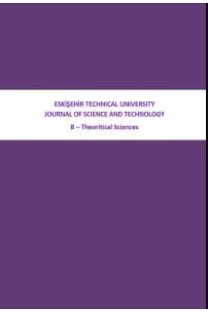CİLT SEGMENTASYONUNDA DERİN ÖĞRENME İLE MAKİNE ÖĞRENİMİNİN KARŞILAŞTIRILMASI
Bu çalışmada, derin öğrenme yöntemleri ile bir deri segmentasyonu çalışması incelenmiştir. Deri bölütleme problemi vaka çalışması olarak seçilmiştir. Bunun temel nedeni, bu konuda çok sayıda çalışmanın olması ve mevcut veri setlerinin çokluğudur. Ek olarak, dış görünüm pikselleri içeren görüntüler birden çok öznitelik içerir. Bu nedenle insan görüntüleri, makine öğrenimi ve derin öğrenme üzerine karşılaştırmalı çalışmalar için çok uygundur. Bu çalışmanın ilk aşamasında, makine öğrenmesinde öznitelik olarak derin bilgiyi içeren RGB uzayı kullanılarak cilt segmentasyonu yapılacaktır. Aynı zamanda derin öğrenme algoritmasının başarısını göstermek için görüntüleri gri tonlamaya dönüştürerek derin öğrenmenin etkisi test edilecek ve başarı farklılıkları verilecektir.
Anahtar Kelimeler:
Skin segmentation, Deep learning, Machine learning
COMPARISON OF DEEP LEARNING WITH MACHINE LEARNING ON SKIN SEGMENTATION
In this study, a skin segmentation study is investigated with deep learning methods. The skin segmentation problem is chosen as a case study. The main reason for this is that there are numerous studies on this subject and the abundance of available data sets. In addition, images containing skin pixels contain multiple attributes. That's why human images are very suitable for comparative studies on machine learning and deep learning. In the first stage of this study, skin segmentation will be done by using RGB space, which contains deep information as an attribute in machine learning. At the same time, to show the success of the deep learning algorithm, the effect of deep learning will be tested by converting images to grayscale, and success differences will be given.
___
- [1] Phung Son Lam, Abdesselam Bouzerdoum and Douglas Chai. Skin segmentation using color pixel classification: analysis and comparison. IEEE transactions on pattern analysis and machine intelligence, 2005; 27(1) 148-154.
- [2] Phung Son Lam, Douglas Chai and Abdesselam Bouzerdoum. Adaptive skin segmentation in color images. IEEE International Conference on Acoustics, Speech, and Signal Processing, Proceedings.(ICASSP'03);Vol. 3. IEEE, 2003.
- [3] Phung Son Lam, Abdesselam Bouzerdoum and Douglas Chai. Skin segmentation using color and edge information. Seventh International Symposium on Signal Processing and Its Applications, Proceedings, Vol. 1. IEEE, 2003.
- [4] Al-Tairi Zaher Hamid et al. Skin segmentation using YUV and RGB color spaces. Journal of Information Processing Systems, 2014; 10(2) 283-299.
- [5] Gasparini Francesca, and Raimondo Schettini. Skin segmentation using multiple thresholding. Internet Imaging. International Society for Optics and Photonics, 2006; VII. Vol., 6061.
- [6] Saini Harpreet Kaur and Onkar Chand. Skin segmentation using RGB color model and implementation of switching conditions. Skin 2013; 3(1): 1781-1787.
- [7] bin Abdul Rahman Nusirwan Anwar, Kit Chong Wei and John See. Rgb-h-cbcr skin colour model for human face detection. Faculty of Information Technology, Multimedia University 4 2007.
- [8] Phung Son Lam, Abdesselam Bouzerdoum and Douglas Chai. Skin segmentation using color and edge information. Seventh International Symposium on Signal Processing and Its Applications, Proceedings. Vol. 1. IEEE, 2003.
- [9] Abbas Zeeshan et al. An efficient gray-level co-occurrence matrix (GLCM) based approach towards classification of skin lesion. Amity International Conference on Artificial Intelligence (AICAI). IEEE, 2019.
- [10] Hall Mark Andrew. Correlation-based feature selection for machine learning, 1999.
- [11] Cai Jie et al. Feature selection in machine learning: A new perspective. Neurocomputing 300; 2018; 70-79.
- [12] http://cs-chan.com/downloads_skin_dataset.html
- ISSN: 2667-419X
- Yayın Aralığı: Yılda 2 Sayı
- Başlangıç: 2010
- Yayıncı: Eskişehir Teknik Üniversitesi
Sayıdaki Diğer Makaleler
ELEKTRİKLİ ARAÇLARIN AKILLI ŞEBEKEYE ENTEGRASYONU
Fatih Burak ÖZKANLI, Zafer DEMİR
DÜŞÜK ÇÖZÜNÜRLÜK VE GRİ GÖRÜNTÜLERDE GERÇEK ZAMANLI CİLT SEGMENTASYONU
INVESTIGATION OF DOGECOIN PRICE MOVEMENTS: A GSADF ANALYSIS
CİLT SEGMENTASYONUNDA DERİN ÖĞRENME İLE MAKİNE ÖĞRENİMİNİN KARŞILAŞTIRILMASI
SİBER TEKNOLOJİNİN TERÖRİST KULLANIMI
Mehmet Nesip ÖĞÜN, Serdar YURTSEVER, Murat ASLAN, Muhammed ELBURASI
